{This post is sponsored by Ball® Fresh Preserving}
Make this conifer infused oil this winter season using foraged conifer needles! Most conifer needles can be used such as pine, spruce, or fir. This conifer infused oil with cinnamon is great for body care and it also has some aromatherapy benefits. It smells absolutely amazing!
Herbal Infusions in Ball® Jars
As many of you already know, I love making herbal infusions, so much so that I even have a whole book about them!
I especially love using Ball® Jars for my herbal infusions (and all of my other herbal and foraging based projects). They are absolutely the best jars with so many styles to choose from!
The Ball® Leak-Proof Storage Lids are also perfect for making herbal infusions and for longer term storage. It’s so nice to have a lid that doesn’t leak when you need to flip your herbal concoctions!
How to Make Conifer Infused Oil
This is such an easy recipe and one I like to make every holiday season for a little added cheer!
Gather the Conifer Needles
The first thing you will need to make this infused oil is evergreen conifer needles. Foraging for conifer needles is usually pretty easy, depending on your location.
Most species of conifer needles can be used in this recipe, including pine, spruce, fir, and hemlock (the evergreen tree, not poison hemlock the toxic herbaceous plant).
I used Douglas-fir, as they are very plentiful in my region!
If you have a real Christmas tree you may be wondering if you can use the needles from it.
The answer is yes, as long as you have made sure that it wasn’t sprayed with anything toxic first. Many Christmas tree farms spray chemicals on their trees, unfortunately!
Please note that the Yew family of trees is highly toxic and should not be used.
For more information on which trees are good to use and which you should avoid, see my post on identifying conifer trees.
Make the Conifer Needle Infused Oil
After collecting a few branches of conifer needles, it’s a good idea to let them sit for a day or two to dry off any moisture that may be on the surface.
Beyond that, conifer needles don’t have a lot of moisture in them to begin with, so it’s not necessary to make sure they are completely dried out before using. Keeping them somewhat fresh also preserves their aromatherapy benefits!
Use scissors to cut the conifer branches into one inch pieces, then gently pack them into a Ball® Pint Jar. Add a whole cinnamon stick to the jar if you’d like (optional, but recommended).
Pour extra virgin olive oil into the jar to cover the conifer needles.
The conifer needles sometimes tend to float or stick out of the oil. Try to push them under the oil as best as you can, but they may still pop back up.
That’s ok, we’ll check in on them again later.
Cover the jar tightly, preferably with a Ball® Leak-Proof Storage Lid, and give it a few gentle shakes to make sure everything is coated in oil.
Open the jar again and push all of the needles down under the oil as best as you can.
Store the jar in a cool place out of direct sunlight for 2-3 weeks or longer (up to 6 weeks), shaking every few days and pushing any stray needles back under the oil.
Strain the Conifer Infused Oil
After the conifer oil has finished infusing, strain out the needles with a fine mesh sieve.
I find that using a canning funnel under the sieve helps to reduce the mess!
Let the conifer needles and cinnamon strain for a few minutes to make sure you get all of that infused oil goodness out of them.
You can gently squeeze the needles a bit to extract any extra bit of oil from them as well.
What you are left with is some amazing smelling conifer and cinnamon infused oil!
How to use Conifer Infused Oil
Now, how to use this beautiful infused oil?
Conifer needles and cinnamon are both warming, help with circulation, and have pain relieving properties. Conifer needles are also beneficial for healing dry and cracked skin.
That means this infused oil is great for body and skin care. Rub it on dry or chapped skin or sore muscles to help soothe and heal.
The oil can also be used to make an herbal salve or lip balm by melting some beeswax into it! See my tutorial on how to make an herbal salve for more info.
You could also use it in a beard balm, like my rosemary pine beard balm!
Conifer needles and cinnamon also have some pretty amazing aromatherapy benefits. This oil smells so lovely, just like a forest (or a Christmas tree, ha!), and may help to reduce stress and anxiety.
This is an added bonus when you are using it on the skin. A small amount can also be rubbed on your wrists, temples, or other areas to gain some aromatherapy benefits!
This is my new favorite infused oil for wintertime, and I know that you will love it too!
More Foraged Conifer Needle Recipes
Here are more recipes and ideas for using conifer needles!
- 30+ Conifer Needle Recipes
- Pine Needle Cough Syrup
- Fir Needle Forest Chai
- Spruce Beer
- Conifer Infused Vodka
- Homemade Infused Gin
Conifer Needle Infused Oil
Equipment
- Ball® Pint Jars
Ingredients
- 1-2 conifer branches
- 1 cinnamon stick optional
- 2 cups extra virgin olive oil
Instructions
- Collect a few branches of conifer needles, then let them sit for a day or two to dry off any moisture that may be on the surface.
- Use scissors to cut the conifer branches into one inch pieces, then gently pack them into a Ball® Pint Jar. Add a whole cinnamon stick to the jar if you’d like (optional, but recommended).
- Pour extra virgin olive oil into the jar to cover the conifer needles. The conifer needles sometimes tend to float or stick out of the oil. Try to push them under the oil as best as you can, but they may still pop back up.
- Cover the jar tightly, preferably with a Ball® Leak-Proof Storage Lid, and give it a few gentle shakes to make sure everything is coated in oil. Open the jar again and push all of the needles down under the oil as best as you can.
- Store the jar in a cool place out of direct sunlight for 2-3 weeks or longer (up to 6 weeks), shaking every few days and pushing any stray needles back under the oil.
- After the conifer oil has finished infusing, strain out the needles with a fine mesh sieve. Let the conifer needles and cinnamon sit in the strainer for a few minutes so that all of the infused oil has a chance to drip out.
Notes
- Most species of conifer needles can be used in this recipe, including pine, spruce, fir, Douglas-fir, and hemlock (the evergreen tree, not poison hemlock the toxic herbaceous plant).
- Please note that the Yew family of trees is highly toxic and should not be used.
- For more information on which trees are good to use and which you should avoid, see my post on identifying conifer trees.
- Conifer needles don’t contain a lot of moisture, so it’s not necessary to make sure they are completely dried out before using. Keeping them somewhat fresh also preserves their aromatherapy benefits!

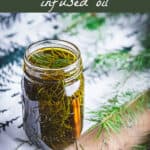

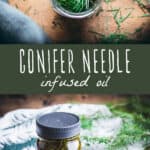

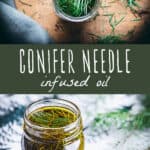
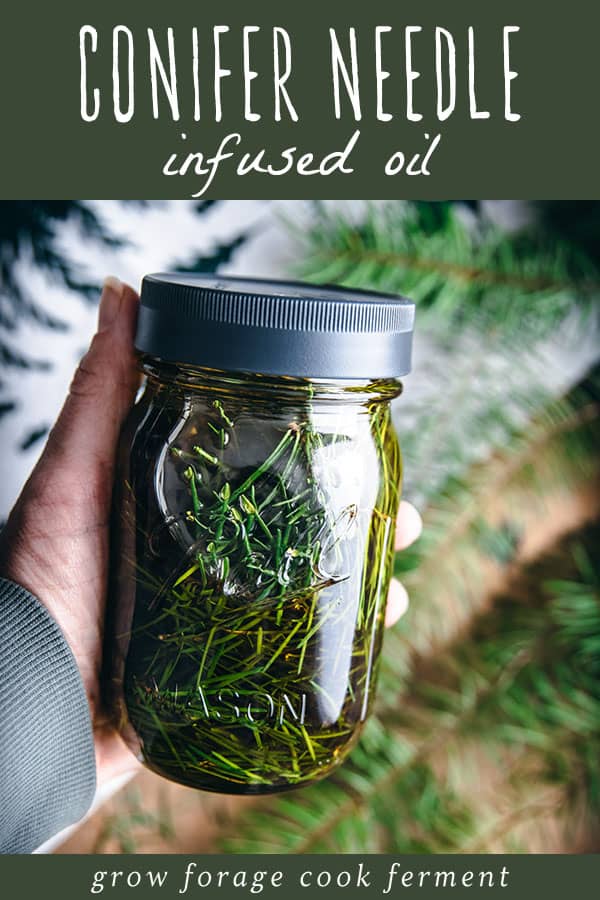
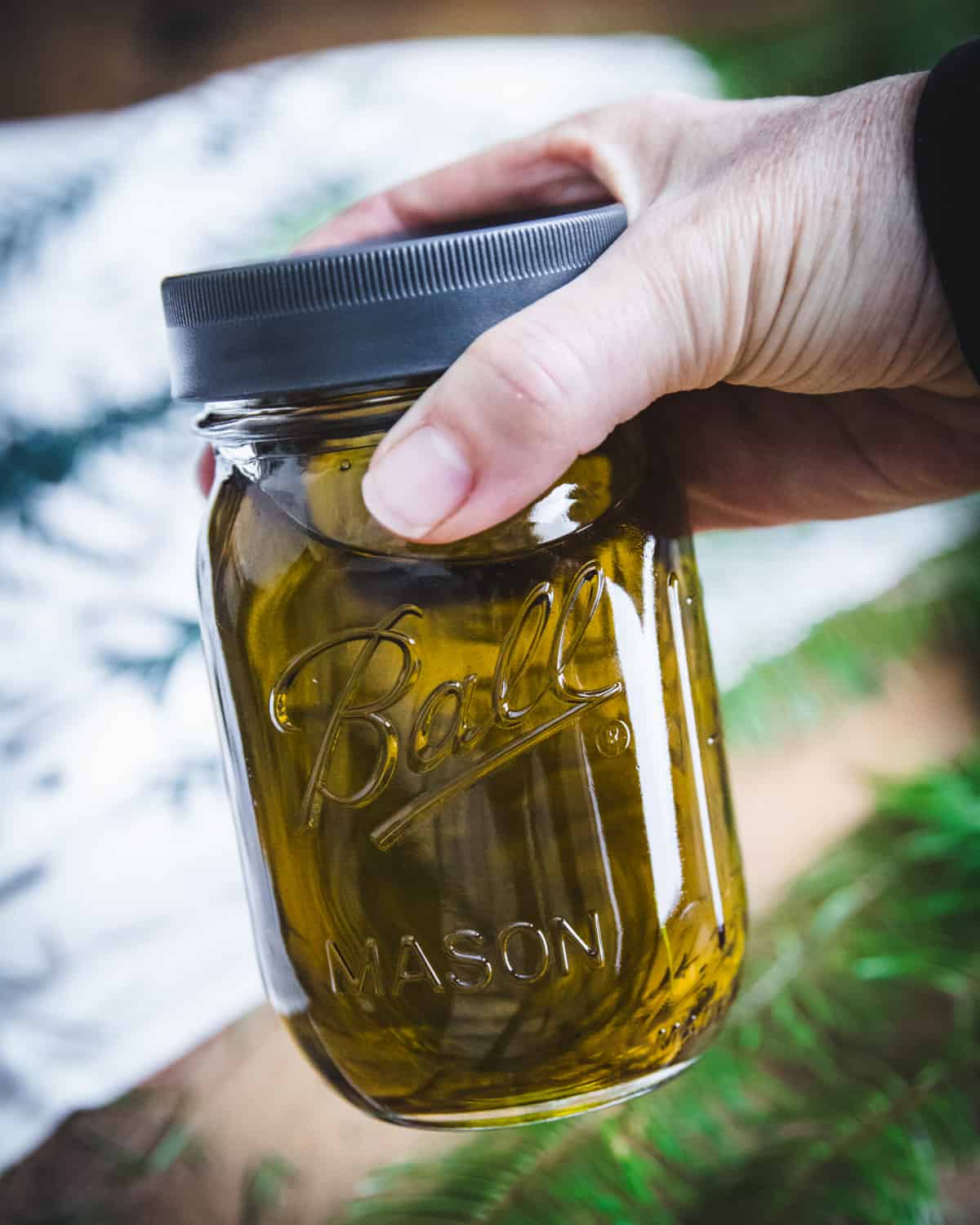
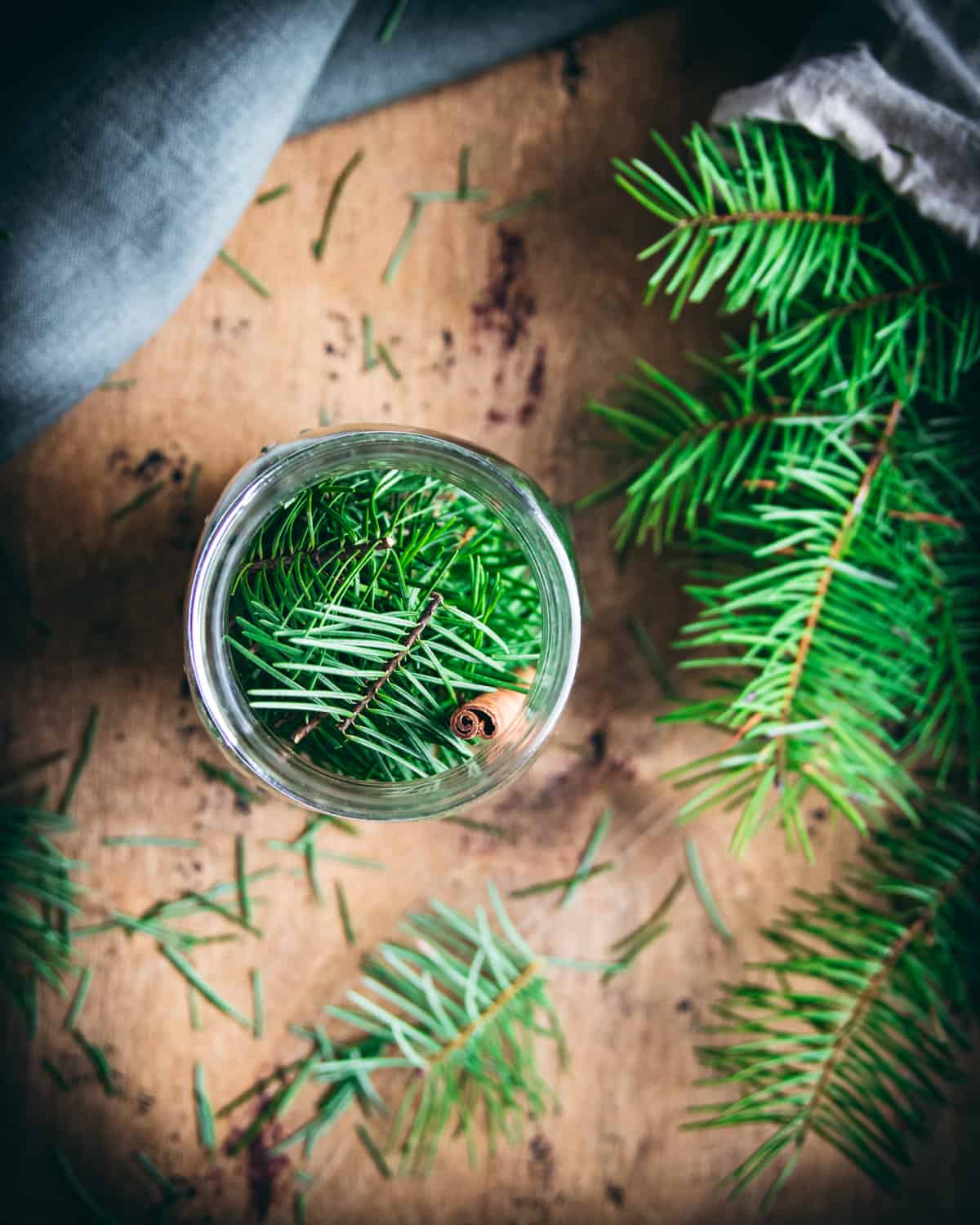
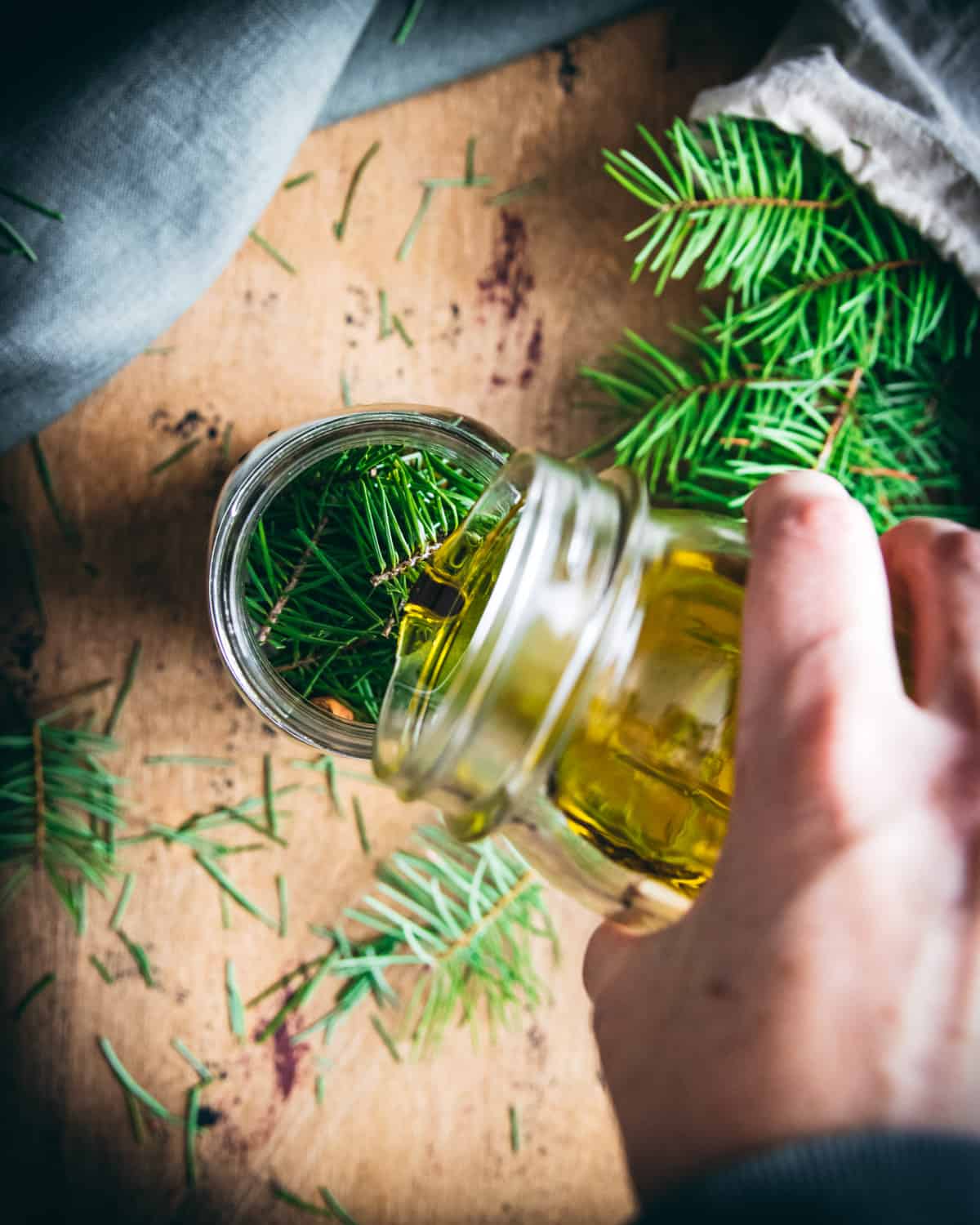
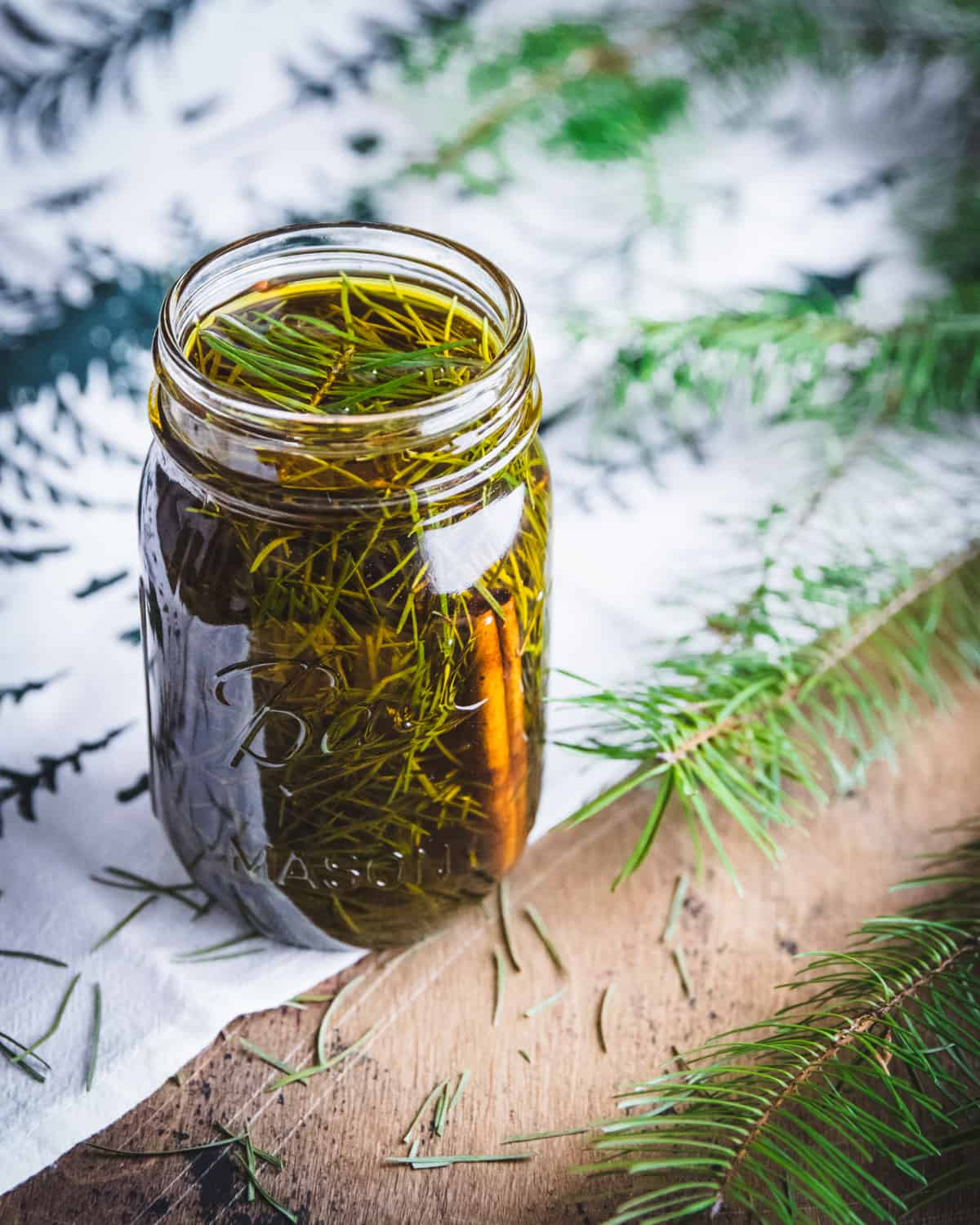
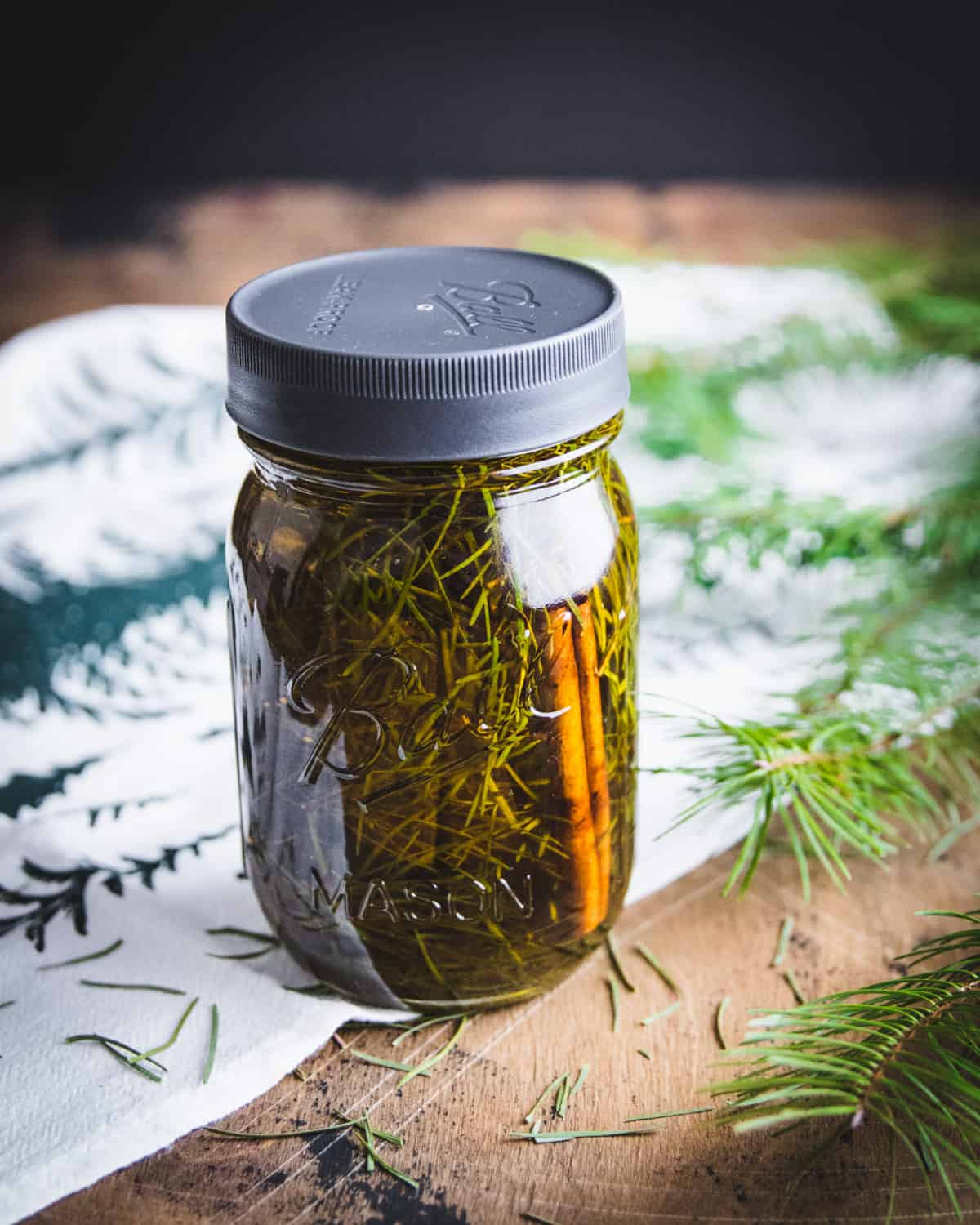
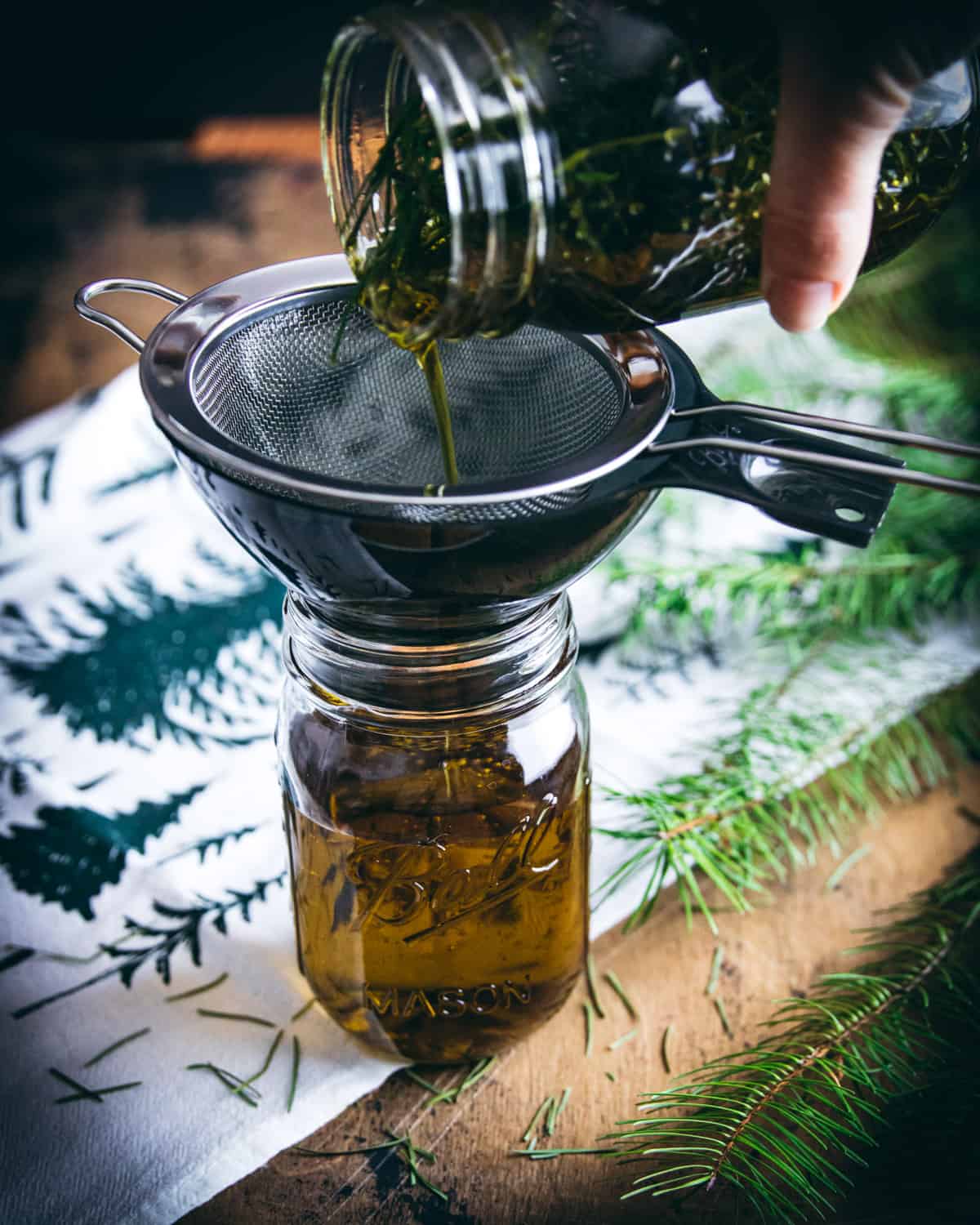
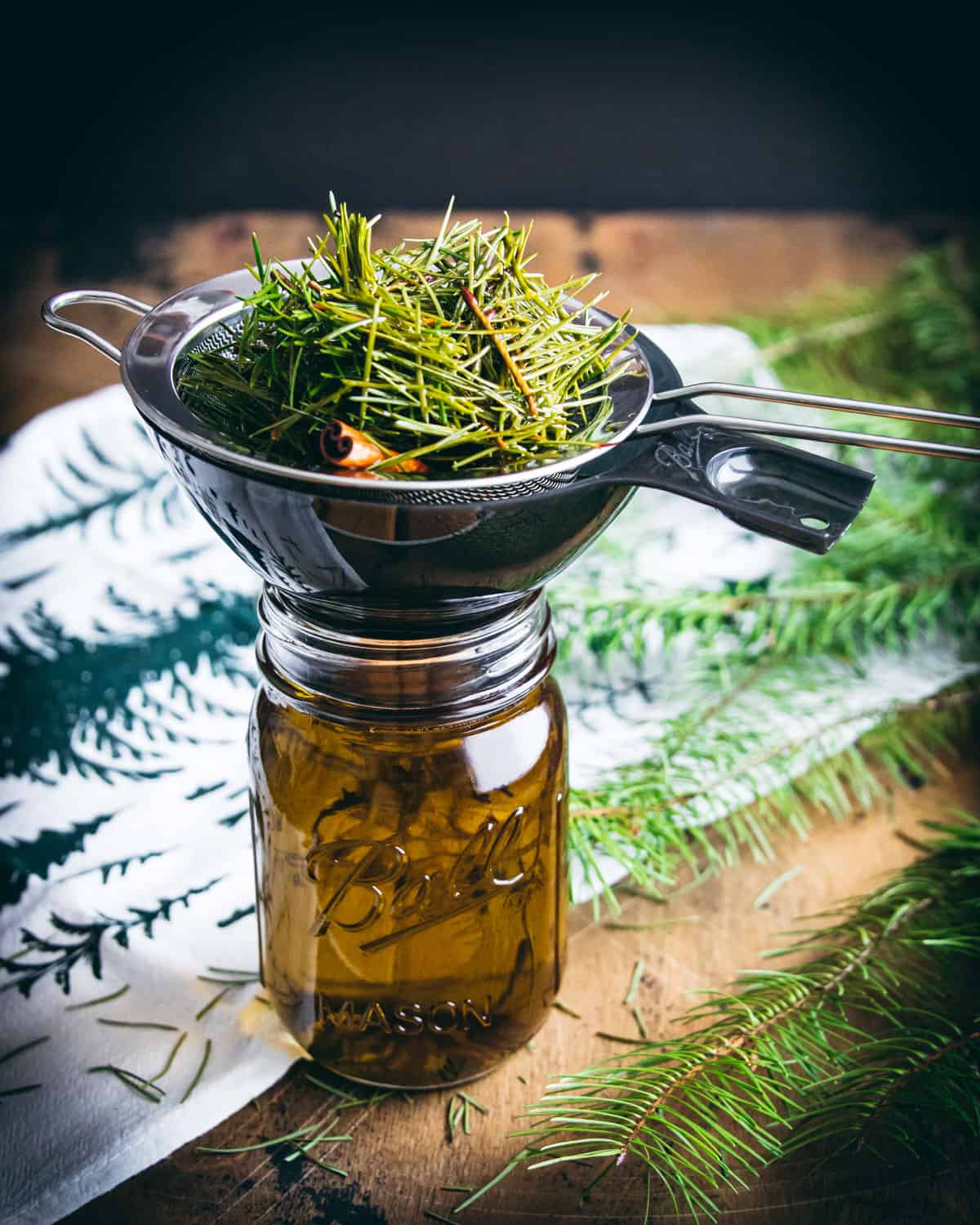
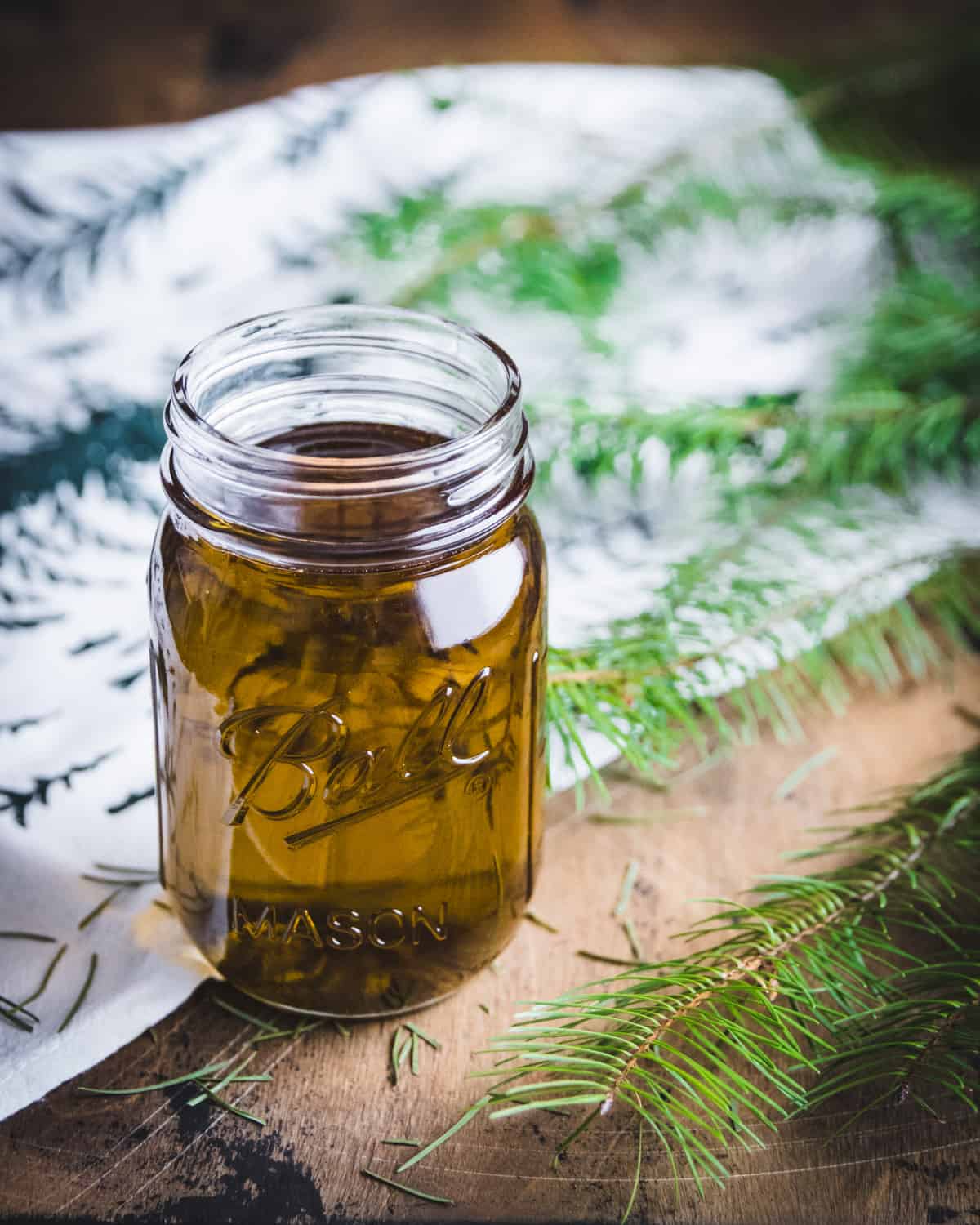
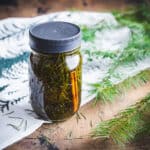

Hello! Love this recipe, it’s so simple and yet so powerful! Thank you for sharing! I do have a question tho, is it a problem if it’s infused in the sun or does it necessary have to stay in a dark place? Thanks!
You could do a solar infusion for the least amount of time that the recipe recommends, two weeks or so should be long enough. I would check on it frequently to be sure your oil isn’t getting too warm.
Thank you for sharing you wonderful recipes.
What do you think about using fir needle olive oil in food? Maybe in salad dressings, drizzled on recipes etc. I drink fir needle often and it is an edible. Have you tried it this way?
You could definitely infuse olive oil with fir needles and use it in salad dressing! Sounds lovely!
Thank you for your thoughts! I was thinking we must be able to. Yay, another use for me jar of fir oil which smells heavenly.
this is amazing, i love your page and can’t wait to learn more! can you use this oil to make candles? thank you :)
Sure!
This oil recipe is a great idea, but I have juniper trees can they be used for this?
Yes, juniper should work with great results!
Hi, this is such a great recipe, I love your stuff. My honey cranberries are marinating now!
Can I ask you about other oils like I un scented coconut in place of the o.o.? Thanks!
You can use coconut oil, but because it’s solid at room temperature, it’s not my favorite option. My second go-to carrier oil is sweet almond, if you’d like to try that.